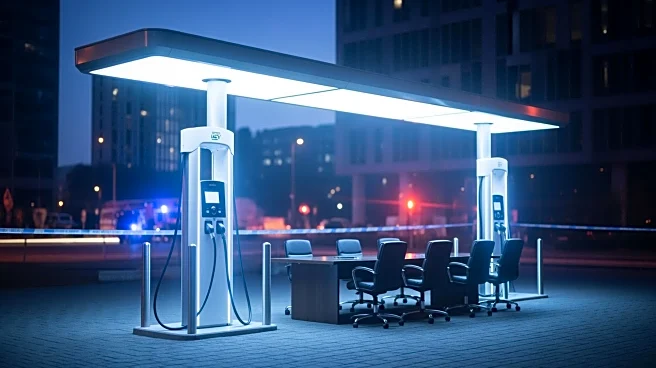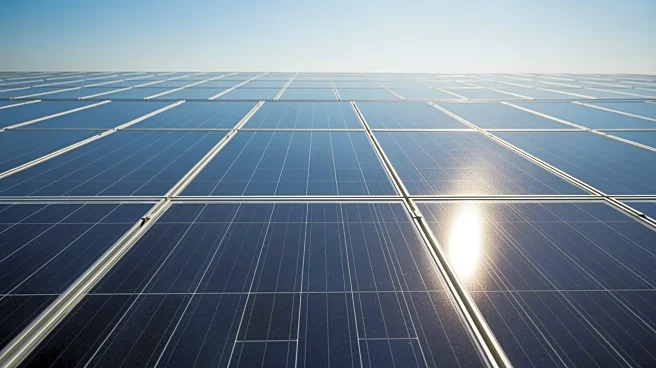What's Happening?
The Energy Information Administration (EIA) has reported a decrease in solar project delays during the third quarter of 2025 compared to the same period in 2024. According to the EIA, approximately 20% of planned solar capacity experienced delays, down
from 25% last year. Despite the high number of delays in 2024, it was a record year for U.S. solar capacity additions, with developers adding around 31 gigawatts (GW) of utility-scale solar capacity. The EIA predicts that 32.5 GW of utility-scale solar will be added in 2025, although this may be less than the previous year due to ongoing delays. The report highlights that delays are more common than cancellations, with less than 1% of planned solar capacity being entirely canceled in a typical month. Most delays occur during the late construction or testing phases, typically lasting only a month or two.
Why It's Important?
The decrease in solar project delays is significant for the U.S. renewable energy sector, as it indicates progress in overcoming previous obstacles that hindered solar capacity additions. This development is crucial for meeting national clean energy goals and reducing reliance on fossil fuels. The solar industry plays a vital role in the transition to sustainable energy, and fewer delays can accelerate this shift. However, the report also warns of potential risks due to recent permitting obstructions, which could impact hundreds of projects in the pipeline. The ability to efficiently bring solar projects online is essential for developers to qualify for tax credits under the Inflation Reduction Act, which incentivizes renewable energy investments.
What's Next?
Solar developers are expected to continue racing to commence construction on projects to qualify for tax credits before the deadline set by the One Big Beautiful Bill Act. The act provides a safe harbor provision for wind and solar projects that begin construction before July 4, 2026. Stakeholders in the solar industry will need to navigate recent permitting challenges, including those from the Department of the Interior, which could lead to further delays. The industry must address these obstacles to maintain momentum in solar capacity additions and meet clean energy targets.
Beyond the Headlines
The ongoing challenges in solar project permitting highlight broader issues in the regulatory environment for renewable energy. These obstacles can affect the pace of clean energy transition and the ability of the U.S. to meet climate goals. The situation underscores the need for streamlined permitting processes and supportive policies to facilitate the growth of renewable energy infrastructure. Long-term, addressing these regulatory hurdles will be crucial for sustaining the expansion of solar energy and achieving national and global emissions reduction targets.














